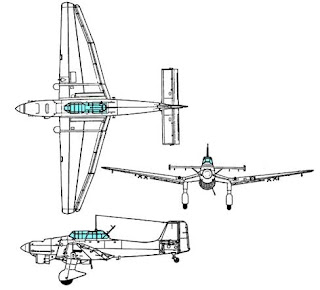Please correct me if I am wrong. Canards, like tailplanes are for pitch control - i.e control in the nose up-nose down axis. Pure delta wings (from whatever I understood of what I read) tend to suffer from loss of pitch control at high angles of attack because the airflow over the wing is affected in some way. That is described as vortex separation. Apparently if the vortex does not separate the airflow over the wing helps the wing to retain pitch control.Kanson wrote:[
Canards are control surface like tail planes and its been used for a very long time and it has its own use. There are designs of double delta with canard. Eurofighter's early incarnation in one such design. So one cannot say as such double delta or cranked double delta wings does the job of canard. It doesn't. What i think is, given the specification and design parameters of LCA, for Tejas chosen wing form of cranked double delta, addition of canard becomes irrelevant or doesn't add any substantial benefits. Otherwise why NAVAL Tejas sports LEVCON which does some of the functions of Canard? So i think, double delta wing form does not mean, canard replacement.
The way in which pitch control can be retained in delta wings at high angle of attack can be by using a completely separate wing such as a tailplane (as in the MiG 21) or a canard. A delta wing aircraft that has neither of these should suffer from high landing speed, very long take off distance and loss of pitch control at high AoA
But in those aircraft that are delta and do not have tailplanes or canards, the "vortex separation" is delayed by strakes (Mirage 2000) and by the "notch" of the double delta. I have absolutely no idea how this works and do not understand it at all. (In addition I suspect that the FBW enabled leading edge control surfaces of the LCA also help in some way.)
If strakes or a cranked double delta do the job of preventing vortex separation and helping to retain pitch control at high AoA - then they are doing exactly the same job as a canard or tailplane that are also merely surfaces that enable pitch control. That is what I mean by cranked double delta doing the job of canard. Please tell me if you think my understanding is wrong. Particularly, as far as I know, canards are not meant for anything other than pitch control (OK maybe roll in some cases). If canards have any other application, please tell me.
It's all about pitch control. It's not about maneuverability. Deltas are highly maneuverable at high altitude. Instability and FBW enhances maneuverability and lower altitudes. Maneuverability in the pitch axis may be aided by canards but elevons do the same job in pure deltas. It is only the loss of pitch control at high AoA that is the issue. That is where the Tejas's double delta serves the same purpose as a canard. And the Tejas' delta configuration is totally unique and nothing like any other aircraft on the net - bar none.
Mind you I may be totally wrong but would appreciate anyone being able to explain what is going on. Why should the Tejas NOT suffer from all the disadvantages of a pure delta even without canards or strakes.






